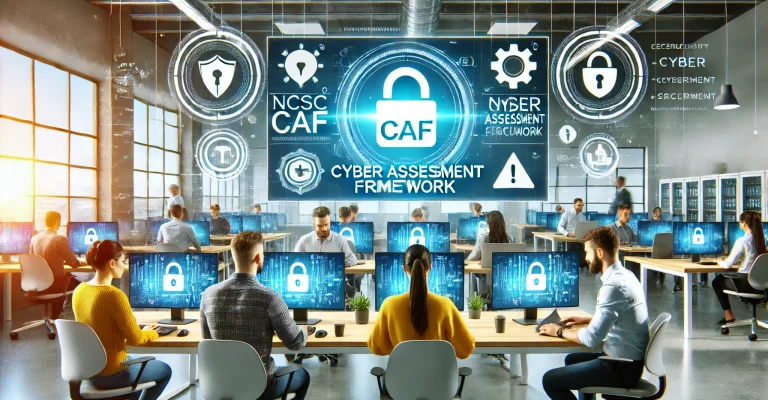Securing Goverment Agencies Introduction
The digital revolution has drastically altered the landscape of government operations. This transformation has led to enhanced service delivery and efficiency, but it has also exposed government agencies to a myriad of cyber threats. Given the sensitive nature of the data they handle, ranging from national security information to personal details of citizens, ensuring robust cybersecurity is paramount. This comprehensive guide explores the challenges faced by government agencies in securing their digital assets and provides strategic solutions to bolster their defences effectively.
The Increasing Threat Landscape
The threat landscape when securing government agencies is constantly evolving. Cyber adversaries are becoming more sophisticated, employing advanced techniques to breach security defences. These threats can come from various sources, including nation-state actors, cybercriminals, hacktivists, and insider threats. Understanding the nature and origins of these threats is essential for developing effective cybersecurity strategies.
Challenges in Securing Government Agencies
High-Value Targets
Securing government agencies is critical as they are prime targets for cyber-attacks due to the vast amounts of valuable information they hold. This includes sensitive data related to national security, law enforcement, and citizen privacy. The high stakes involved mean that agencies must be prepared for a wide range of attacks, from sophisticated state-sponsored campaigns to disruptive hacktivist activities. Protecting this information is crucial to maintaining national security and public trust.
Reference: UK Cyber Security Operations Centre (CSOC) Information
Complex Networks
The IT networks of government agencies are often highly complex, incorporating a variety of platforms, software, and hardware components spread across multiple locations. This complexity can create numerous security vulnerabilities that are challenging to manage and secure. The interconnected nature of these networks means that a breach in one area can potentially compromise the entire system.
Reference: House of Commons Report on IT Complexity in Public Services
Regulatory Requirements
Government agencies must navigate a complex web of regulatory requirements at the federal, state, and international levels. Compliance with these regulations requires a deep understanding of legal obligations and the implementation of appropriate technical measures. The regulatory landscape is continually evolving, and agencies must stay abreast of changes to avoid legal and financial repercussions.
Reference: ICO Guidelines on GDPR Compliance
Limited Budgets
Budgetary constraints often pose a significant challenge for securing government agencies. With limited financial resources, agencies may struggle to prioritise cybersecurity initiatives over other essential services. Insufficient funding can also hinder the recruitment and retention of skilled cybersecurity professionals, who are critical to maintaining a robust security posture.
Reference: National Audit Office Report on Cybersecurity in UK Government Departments
Strategies for Securing Government Agencies from Cyber Threats
Comprehensive Cybersecurity Policy
A well-defined cybersecurity policy is essential for establishing a strong security framework. This policy should outline the agency’s cybersecurity objectives, roles and responsibilities, and specific guidelines for data classification, risk assessment, and incident response. A clear and comprehensive policy ensures that all stakeholders are aware of their responsibilities and the measures needed to protect sensitive data.
Reference: UK National Cyber Security Strategy 2016-2021
Conducting Regular Security Audits
Regular security audits are crucial for assessing the effectiveness of existing security measures. These audits should be thorough, covering all aspects of the IT infrastructure, including software, hardware, network configurations, and personnel practices. Identifying and addressing vulnerabilities through regular audits helps maintain a strong security posture and ensures compliance with regulatory requirements.
Reference: Cyber Essentials
Implementing Strong Access Controls
Strong authentication mechanisms, such as multi-factor authentication (MFA), are essential for preventing unauthorised access to sensitive information. Agencies should also adopt the principle of least privilege, ensuring that personnel have only the minimum access necessary to perform their duties. This reduces the risk of internal threats and limits the potential impact of compromised credentials.
Reference: NCSC Guidance on Access Control
Encryption of Sensitive Data
Encryption is a critical component of data protection. When securing government agencies, they must deploy cryptographic techniques that meet or exceed industry standards and ensure that encryption keys are securely managed. Encrypting sensitive data helps protect it from unauthorised access and potential breaches, safeguarding the privacy and security of citizens’ information.
Reference: GCHQ Encryption Standards
Robust Network Security Measures
Implementing multi-layered network security measures provides a strong defence against cyber threats. These measures should include firewalls, intrusion detection and prevention systems, and real-time monitoring tools. Proactive monitoring and response capabilities enable agencies to identify and mitigate threats as they emerge, enhancing overall network security.
Reference: Cyber Growth Partnership
Employee Training
Human error is a significant factor in cybersecurity incidents. A well-designed training program equips employees with the knowledge and skills to act as the first line of defence against cyber threats. Regular training ensures that staff stay updated on the latest threats and best practices, fostering a culture of security awareness within the agency.
Reference: GCHQ Certified Training
Incident Response Plan
A detailed incident response plan is vital for minimising the impact of cybersecurity incidents. This plan should outline the steps to be followed during an incident, specifying roles and responsibilities. A well-prepared response team can quickly address incidents, reducing damage and accelerating recovery.
Reference: NCSC Incident Response Guidance
Emerging Technologies and Practices
Artificial Intelligence and Machine Learning
Artificial Intelligence (AI) and Machine Learning (ML) are revolutionising cybersecurity by enabling more sophisticated threat detection and response capabilities. These technologies can analyse vast amounts of data to identify patterns and anomalies that may indicate a cyber threat. When securing government agencies, a useful tool could be to leverage AI and ML to enhance their security posture and respond more effectively to emerging threats.
Zero Trust Architecture
The Zero Trust model is an emerging cybersecurity paradigm that assumes no user or device, whether inside or outside the network, should be trusted by default. This approach requires continuous verification of user and device identities and enforces strict access controls. Implementing a Sero Trust architecture can significantly enhance the security of government networks.
Blockchain Technology
Blockchain technology offers a decentralised and secure method for storing and sharing data. Its inherent security features, such as immutability and transparency, make it an attractive option for securing government agencies when seeking to protect sensitive information. Blockchain can be used to enhance data integrity, streamline processes, and reduce the risk of data breaches.
Future Directions and Conclusion
Collaboration with the Private Sector
Public-private partnerships are crucial for enhancing cybersecurity in government agencies. These collaborations facilitate the exchange of information about emerging threats and innovative solutions. By working together, government agencies and private sector entities can develop more effective cybersecurity strategies and technologies.
Reference: Cyber Growth Partnership
Continuous Adaptation
Cyber threats are continually evolving, requiring ongoing adaptation of cybersecurity measures. This involves regularly updating policies and procedures, investing in the continuous education of cybersecurity personnel, and acquiring the latest security technologies. Staying ahead of the curve is essential for maintaining a robust security posture.
Reference: NCSC Future Trends in Cybersecurity
Final Thoughts
Securing government agencies from cyber threats is a monumental task that demands a proactive and multi-dimensional strategy. By adopting robust policy frameworks, conducting regular audits, implementing strong access controls, and fostering public-private partnerships, agencies can significantly enhance their cybersecurity posture. Continuous adaptation and employee training are crucial for staying ahead of evolving threats. Through comprehensive, adaptive, and collaborative approaches, government agencies can better protect their constituents and maintain the trust of the public.














